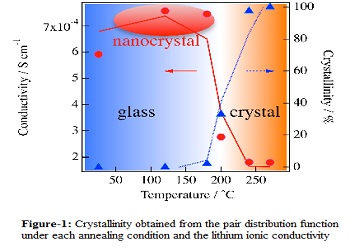
Koji Ohara
JASRI/SPring-8, Japan
Title: Structural study of sulfide glassy electrolytes for all-solid-state batteries
Biography
Biography: Koji Ohara
Abstract
Sulfide glass ceramics are of interest for use as solid electrolytes in lithium ion batteries, because the realization of an all-solid-state battery will enable the miniaturization of battery packages and reduce safety issues. In general, the crystallization of glassy materials results in a decrease in the conductivity, although it increases in a few sulfide glasses owing to the crystallization of a highly conductive new phase. Significant progress has been made so far with the discovery of numerous sulfide crystalline compounds with high ionic conductivities such as Li7P3S11, Li10GeP2S12, Li7P2S8I and Li10SnP2S. Their conductivities are higher than those of the corresponding sulfide glasses. Recently, we reported that 75Li2S-25P2S5 glass in the binary Li2S-P2S5 system with strongly polarized sulfur has high ionic conductivity. In the sulfide glasses as presented here, an interesting improvement in the conductivity is observed during annealing, which appears in the glassy phase. In this presentation, we report the local glassy structure with a mixture of glass and crystalline phases by using synchrotron X-ray pair distribution function (PDF) analysis. The differential pair distribution function is utilized as a methodology for the mixed materials in our work to extract the glassy structure in the 75Li2S-25P2S5 sulfide glass ceramic. This method quantitatively reproduced the fraction of mixed phases, which was in agreement with the result of NMR. The extracted glassy structure exhibited no changes during the annealing treatment. Owing to the crystallization of the majority phase, the ionic conductivity in this glass decreased after crystallization. We observed the formation of a nanocrystalline phase in the diffraction pattern obtained during the annealing. Thus, our present finding of minority component is expected to lead to further understanding for the development of solid electrolytes with high ionic conductivity.


